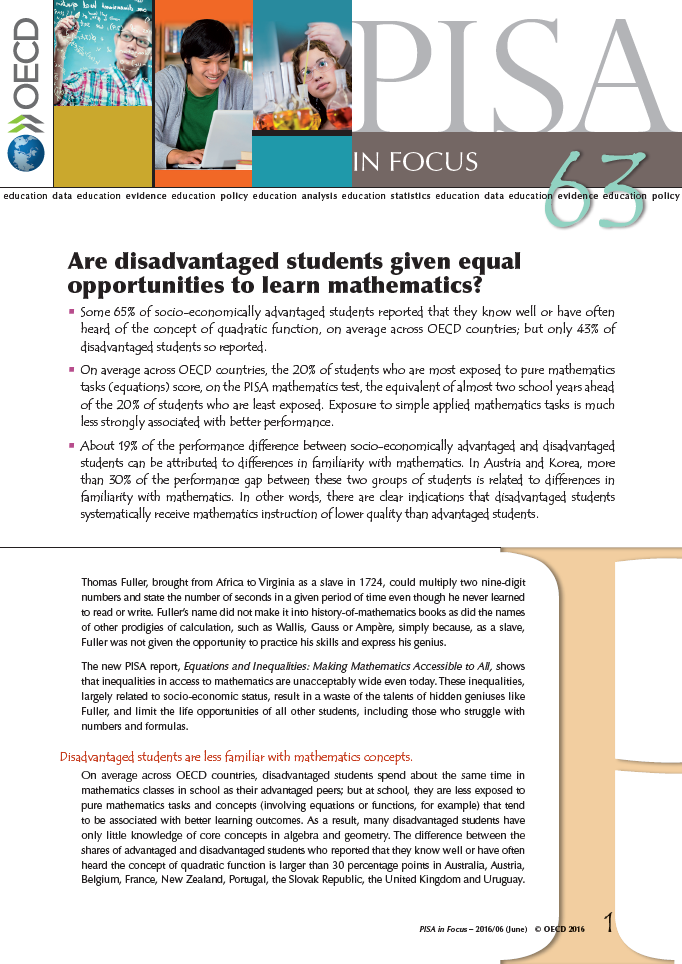Are disadvantaged students given equal opportunities to learn mathematics?
Date
2016-06Author
OECD. Organisation for Economic Cooperation and Development
Metadata
Show full item recordAbstract
Some 65% of socio-economically advantaged students reported that they know well or have often heard of the concept of quadratic function, on average across OECD countries; but only 43% of disadvantaged students so reported. On average across OECD countries, the 20% of students who are most exposed to pure mathematics tasks (equations) score, on the PISA mathematics test, the equivalent of almost two school years ahead of the 20% of students who are least exposed. Exposure to simple applied mathematics tasks is much less strongly associated with better performance. About 19% of the performance difference between socio-economically advantaged and disadvantaged students can be attributed to differences in familiarity with mathematics. In Austria and Korea, more than 30% of the performance gap between these two groups of students is related to differences in familiarity with mathematics. In other words, there are clear indications that disadvantaged students systematically receive mathematics instruction of lower quality than advantaged students.

